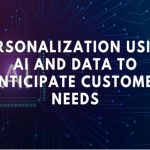 Transportation is a critical sector that plays a key role in connecting people, goods, and services around the world. With the help of artificial intelligence (AI), the transportation industry is undergoing a major transformation, from optimizing traffic flow to enabling autonomous vehicles. AI can be used to analyze vast amounts of data, predict traffic patterns, reduce congestion, and enhance safety. It can also help transportation companies optimize their fleets, reduce fuel consumption, and improve delivery times. In this article, we will discuss with you the role of AI in transportation.
Transportation is a critical sector that plays a key role in connecting people, goods, and services around the world. With the help of artificial intelligence (AI), the transportation industry is undergoing a major transformation, from optimizing traffic flow to enabling autonomous vehicles. AI can be used to analyze vast amounts of data, predict traffic patterns, reduce congestion, and enhance safety. It can also help transportation companies optimize their fleets, reduce fuel consumption, and improve delivery times. In this article, we will discuss with you the role of AI in transportation.
AI in transportation
Artificial intelligence (AI) is a technology that imbues machines with human intelligence. This kind of unique skill makes it an ideal tool in the transportation industry. AI Machines can mimic people, automate manual tasks, and learn on the fly just like people. AI also has the potential to lower carbon emissions, vehicle costs, and fuel consumption.
When it comes to traffic flow, artificial intelligence will allow for streamlined traffic patterns. Smarter traffic light algorithms & real-time tracking can control higher and lower traffic patterns effectively. Transportation industry professionals can also apply AI in public transportation for optimal scheduling & routing.
How AI can optimize transportation

The primary priority of the transportation sector has always been the safety of passengers, pedestrians, and drivers. Utilizing AI models has many more benefits than just reducing human mistake rates.
Businesses with a large fleets, intricate infrastructures, and various links in a chain of collaboration are always faced with the challenges of intermodal logistics. Modern modeling technologies can solve these issues and boost operational effectiveness.
This incorporates traffic detection to change the route in real-time, optimal route routing with minimal wait times. Traffic is one of the main hindrances to transportation. It leads to accidents, delays, and fuel waste. Prediction algorithms can estimate traffic conditions and even automatically determine other routes. This is possible with data from traffic monitoring, such as information about upcoming events or construction sites
Benefits of Artificial Intelligence in the Transportation and Logistics Industry
Route optimization
 The goal of route optimization is to assure accurate and timely delivery or drive. It is also reducing transportation expenses. The core of route management is finding the ideal route. It requires studying a lot of data and using it to one’s benefit. The likelihood of finding a new route that will save you time, and money, and provide you a competitive advantage increases when you use AI transportation algorithms.
The goal of route optimization is to assure accurate and timely delivery or drive. It is also reducing transportation expenses. The core of route management is finding the ideal route. It requires studying a lot of data and using it to one’s benefit. The likelihood of finding a new route that will save you time, and money, and provide you a competitive advantage increases when you use AI transportation algorithms.
Predictive Fleet Maintenance
One of the most well-known applications of AI in transportation is predictive fleet maintenance. It enables you to recognize underlying problems and take preventative action. The core of predictive maintenance is the use of previous data to create predictions about potential patterns in the future.
Predictive fleet maintenance analyzes different variables and identifies vehicles that require immediate repairs. These technologies gather information about recurrent problems to assist firms in making data-driven decisions.
Reduction of operational costs
Artificial intelligence use in the transportation sector reduces operating expenses as well. Companies can employ fewer trucks and save a significant amount on operating expenditures by anticipating needs. This can include payroll, maintenance, marketing, and production costs.
Obviously, some of the costs stated cannot simply decrease by integrating artificial intelligence. However, businesses can reduce operating expenses by automating operations and using machines.
Efficient use of space
Calculating the more effective use of space is very challenging due to the enormous number of potential outcomes. AI-based shipping and transportation technology performs the calculations on your behalf.
Businesses that have the capacity to gather and analyze enormous volumes of data can predict the route’s ideal capacity utilization. By doing so, you can cut down on the number of vehicles needed and thus, the expense.
Inventory Management

Inventory and warehouse management have undergone a true revolution thanks to AI-driven automation. AI-enhanced warehouse robots can complete regular operations more quickly and accurately. AI is able to keep warehouse stock levels to an absolute minimum. This is possible by studying consumer behavior, considerably reducing maintenance and rental expenses.
In the transportation sector, artificial intelligence is capable of making both immediate and long-term predictions. Short-term predictions can compare supply and demand. This ensures that you only keep the necessities in your storage, whilst long-term forecasts focus on recognizing building trends and seasonal demands.
Vehicle Tracking
Logistics businesses can use IoT technology to install IoT sensors on each vehicle. This helps maintain constant synchronization. As a result, delivery is safer because the recipient receives real-time information about the vehicle’s location, speed, and direction.
Impact on Safety and Traffic Accidents
A wonderful method to make developing nations safer is to implement AI in the transportation sector. Safety concerns for both drivers and pedestrians are a legitimate worry. given the poor infrastructure that is present in many nations, especially low-income ones. Poor roads, vehicles with outmoded safety standards, and human error, which account for a large portion of this issue, all offer serious risks.
Workforce management
The use of AI in transportation is crucial for labor management, specifically for hiring and human resources procedures. The onboarding process for new hires can be more seamless. Moreover, tracking their performances and promoting them to better jobs is easier thanks to AI-driven solutions.
Sustainability & eco-friendliness
In the business sector, one of the hottest buzzwords is sustainability. Climate change forced us to reconsider our way of life. AI-driven technology is capable of bringing fresh approaches to pressing global issues. Engineers are able to create cutting-edge ways to power vehicles. They can do this without affecting the environment thanks to the use of AI in the transportation industry. Reduced carbon emissions and fuel use are the outcomes.
Advantages of AI in the transportation industry

The use of smart unmanned vehicles can improve the number of truck driver accidents that occur at night, which is a major problem. These accidents have significant personal and financial costs. As AI becomes more integrated, labor costs in this industry will decline, resulting in higher profits.
Some AI trucks have a special feature of predicting accidents as well as health issues of people around the truck. They can detect a heart attack and alert emergency services with the location and details of the diagnosis. Auto-pilot or completely unmanned vehicles can allow the driver to take a nap without causing serious accidents.
With fully automated fleets, long driving hours and taking breaks won’t be a concern. Artificial intelligence (AI) will give automakers opportunities to lower production costs and introduce new revenue streams.
There is an app for everything these days, including AI-powered real-time traffic updates. These apps use location data from users’ smartphones to predict and analyze traffic conditions. These apps may face direct competition from autonomous vehicles themselves.
Roadside sensors and cameras gather a massive amount of traffic-related information. The technology sends data to the cloud, where it reveals traffic patterns using big data analytics and an AI-powered system. Data processing also enables the prediction of future traffic flows.
Disadvantages of AI in transportation
Countries and towns with few resources may not be able to adopt AI-driven traffic control systems. Some nations do not permit autonomous vehicles. Self-driving cars would need extensive reconstruction and alteration. AI requires human aid and control to function effectively. It is not a fully autonomous system. AI intelligence is still not focused on managing data.
Rather, it is about learning from experience and becoming smarter with each operation. AVs can save lives, but they may also injure or kill someone at some point. After some time, it becomes an unexpected checking framework, which is why it is challenging to spot errors when they occur.
More than half (53%) of global business and IT leaders cited the high costs associated with AI technology as a major deterrent to adoption. AI will have an impact on a number of blue-collar jobs in the transportation industry. Automakers can use AI to adapt to a changing transportation landscape.
Artificial intelligence technologies will increase the effectiveness of the systems they integrate with. For all of the systems to fully realize the potential of more advanced technologies, AI users need to utilize power more wisely.
Five Examples of AI in Transportation
Autonomous Vehicles
Autonomous vehicles from Tesla, BMW, and Mercedes are now successful. We can expect to see more of these vehicles appearing on the roads, making what was once only a pipedream a very real possibility.
Smartphone Apps
There is a modern equivalent of an app for everything. This includes real-time traffic updates powered by AI provided by apps like Google Maps or Waze. These apps are able to forecast and analyze traffic conditions to better inform travel plans. This is possible by leveraging location data gathered from users’ smartphones.
Traffic Management Solutions
Traffic management systems are another application of artificial intelligence technology. Artificial intelligence can improve and streamline traffic management and make our roads smarter. This is possible because of its processing, control, and optimizing capabilities.
Law Enforcement
Artificial intelligence is also now used in law enforcement capacities. It can help identify and catch those who drink and/or text while driving. This can often be a challenge to human officers due to the speeds at which vehicles and passengers can come into and out of view. With artificial intelligence, this is no longer an issue.
Passenger Transportation
Practically every commercial airplane currently in service uses autopilot systems. This is one of the first applications of artificial intelligence in the transportation industry. While it might not sound as futuristic today as other uses of AI that are being explored, it is still a crucial component of any modern flight.
How will AI transform the logistics industry?
In automated warehouses, industry experts use management software and robotics together. This allows for the autonomous execution of transport and product placement tasks. AI enables the allocation of the appropriate resources to each of the daily activities that develop in this manner.
How is artificial intelligence changing the future of air transportation?
AI in aviation has the ability to improve airline safety, automate flight scheduling, and enable predictive maintenance. It can also expand urban air mobility. AI algorithms examine a wide range of flight data. This includes route length, elevations, miles, fuel consumption, aircraft type, and a variety of other data factors.
What is the future of AI in Transportation?
With demonstrations of autonomous buses and other similar technologies, AI is already set to disrupt public transportation. More people will be able to travel quickly to their destinations thanks to these driverless technologies. The appropriate vehicles can also avoid congestion when combined with useful AI intelligence.





